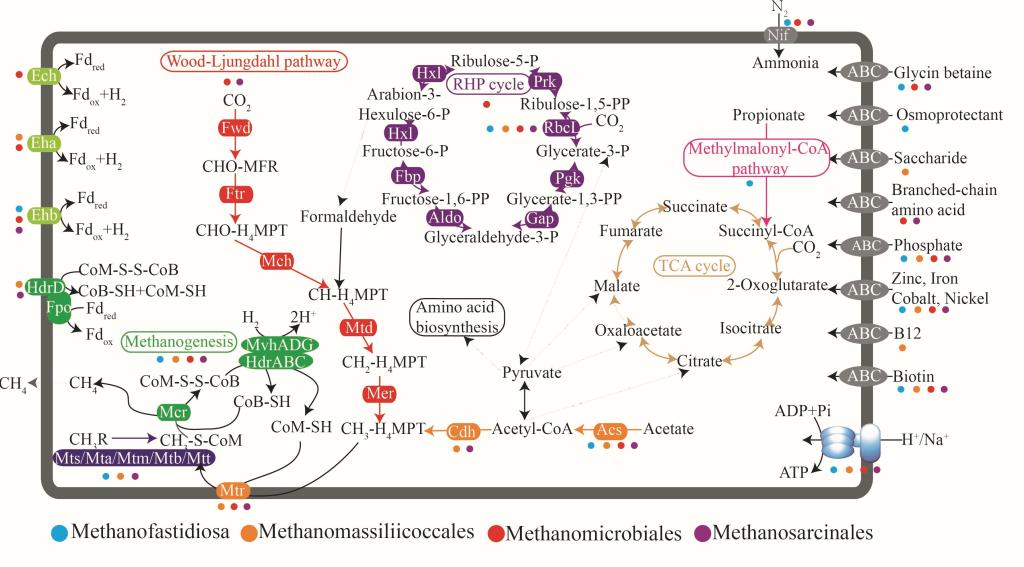Recently, Professor Meng Li’s group from the Institute for Advanced Study of Shenzhen University published a paper titled ‘Genomic and transcriptomic insights into methanogenesis potential of novel methanogens from mangrove sediments’ in Microbiome (2019 IF=10.465), a top journal on the filed. In this paper, diverse methanogens were found in the sediments of Shenzhen Futian Mangroves. Using a combined metagenomic and metatranscriptomic approaches, this paper investigated the potential metabolisms of two novel methanogens, and evaluated relative their contributions to methane production in mangroves. Professor Meng Li from IAS is the corresponding author, and Postdoc researcher Cui-Jing Zhang from IAS is the first author.
(Video Abstract)
Methanogens, which can produce greenhouse gas methane, play an important role in global carbon cycle and climate change. Methanogens from the phylum Euryarchaeota are currently classified into one class and seven orders, including two novel methanogen taxa, Methanofastidiosa and Methanomassiliicoccales. However, the potential mechanisms of the novel methanogens and their relative importance to methane production in mangroves are poorly understood.
In the current study, Dr. Zhang et al. constructed 13 metagenome-assembled genomes (MAGs) representing one class (Methanofastidiosa) and five orders (Methanomassiliicoccales, Methanomicrobiales, Methanobacteriales, Methanocellales, and Methanosarcinales) of methanogens, including the two novel methanogens, from Shenzhen Futian mangrove sediments. Comprehensive annotation indicated the presence of an H2–dependent methylotrophic methanogenesis pathway in Methanofastidiosa and Methanomassiliicoccales (Figure 1). Based on the functional gene analysis, hydrogenotrophic and methylotrophic methanogenesis are the dominant pathways in mangrove sediments. Further, MAG mapping revealed that hydrogenotrophic Methanomicrobiales were the most abundant methanogens and that methylotrophic Methanomassiliicoccales were the most active methanogens in the analyzed sediment profile, suggesting their important roles in methane production in mangrove ecosystems.

(Figure 1: Predicted metabolic pathways in the four dominant methanogen lineages)
The results of this study expand our knowledge of metabolic abilities of two novel methanogens, highlighting relative contribution of diverse methanogens in methane production in mangroves.
This work was supported by the grants from the National Natural Science Foundation of China, the Science and Technology Innovation Committee of Shenzhen, and the Key Project of Department of Education of Guangdong Province.
Paper link: https://microbiomejournal.biomedcentral.com/articles/10.1186/s40168-020-00876-z


